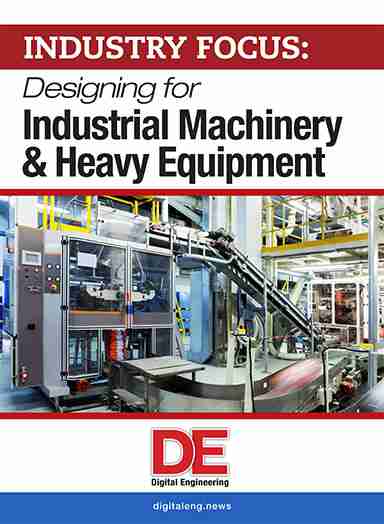Sel-driving cars, hyperloops and the latest wearables often get called out as marvels of modern engineering, but the manufacturing machinery used to help manufacture, assemble and package them are no less worthy of attention.

Some industrial equipment can have more than 1 million parts, calling for system simulation and complex design to produce them. And, like other design engineers, the people making industrial machinery are being tasked with making those machines smarter, connecting them to the industrial internet of things (IIoT) and the digital thread. In fact, industrial machinery is seen as an excellent IIoT use case because a machine with 1 million parts is bound to need maintenance, and no one wants to keep a million parts on hand. If the machine can predictively call for maintenance, expensive downtimes are avoided and parts can ready as needed.
Even better, if the machine can record and share manufacturing information that can be mined to help determine which parts in an assembly might be redesigned to improve productivity or which machine components are breaking down most often, it can pay huge dividends. But there’s more to the IIoT than sensors and data communication. Vendors are working hard to develop automated workflows to get data from the factory floor everywhere it can be useful to the enterprise—including the engineering department. If the challenge of sharing data back and forth along the digital thread can be met, it paves the way for fulfilling much of the promises swirling around Industry 4.0—from digital twins to enhanced automation. In short, the pressure is on for industrial machinery designers to not only design and simulate incredibly complex machines that blend mechanical, electronic and software engineering disciplines, but that can also serve as the front line of the IIoT.
The articles compiled in this special digital issue focus on how vendors are reacting to the need to digitize the factory floor and connect it all the way back through the enterprise to front-end product design and development. As more machines report in for maintenance, industrial machinery design engineers will be able to focus even more on making those machines easier to service before they ever reach the factory floor.
Download today